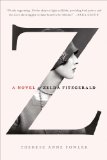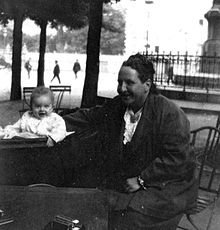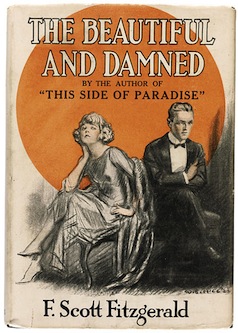Summary | Excerpt | Reading Guide | Discuss | Reviews | Beyond the Book | Read-Alikes | Genres & Themes | Author Bio

This article relates to Z: A Novel of Zelda Fitzgerald
The period between the two World Wars was one of thriving creativity for many artists, and Paris with its bohemian lifestyle, its recognition of artists, and vibrant social life offered plenty of enticements to American writers. The fact that the United States passed Prohibition laws in 1920, banning the sale of alcohol, didn't hurt the migration to Paris either. Among the many who moved to the City of Light were F. Scott Fitzgerald and his wife Zelda, and Ernest Hemingway whose mentor, Gertrude Stein, was a permanent fixture on the expat literary scene.
 Stein labeled this group of expat writers as "The Lost Generation" – writers who were adrift after World War I and were trying to find a set of values they could believe in. Their general rootlessness and a feeling of being unmoored gave the moniker added relevance. It is worth noting that artists of all kinds and from many places (not just American writers) made Paris their home during this time. Prominent among these were Pablo Picasso and Salvador Dali.
Stein labeled this group of expat writers as "The Lost Generation" – writers who were adrift after World War I and were trying to find a set of values they could believe in. Their general rootlessness and a feeling of being unmoored gave the moniker added relevance. It is worth noting that artists of all kinds and from many places (not just American writers) made Paris their home during this time. Prominent among these were Pablo Picasso and Salvador Dali.
The 1920s were a boom time for migration to Paris and the American expat community grew strong in the city, with many favoring specific local cafes and settling mostly on the Left Bank of the river Seine. Favorite cafes frequented include the Dôme, the Select, and the Rotonde, in the Montparnasse district. Distinct groups of expats slowly evolved – one of them, which included author Patrick Bowles, helped found the expat periodical, "Merlin", as well as one of the English language presses, Olympia Press. Olympia was not the only such press; there were a fair number of others that catered to the writer writing in English. The Beat writers, including Allen Ginsberg and William Burroughs, were another significant part of this expat crop of writers.
 F. Scott Fitzgerald was said to have been greatly influenced by the city and its milieu – one of his greatest successes, The Great Gatsby, was published when the Fitzgeralds were in France (Scott completed the last part of the book on the French Riviera). Z describes the 1920s Paris expat scene beautifully with Gertrude Stein and, of course, Ernest Hemingway making an appearance.
F. Scott Fitzgerald was said to have been greatly influenced by the city and its milieu – one of his greatest successes, The Great Gatsby, was published when the Fitzgeralds were in France (Scott completed the last part of the book on the French Riviera). Z describes the 1920s Paris expat scene beautifully with Gertrude Stein and, of course, Ernest Hemingway making an appearance.
The stock market crash in the late 1920s caused many of these expats to return home but there was another brief period after the end of World War II when the expat scene in Paris boomed again, slowly decreasing in the 1960s when social upheaval in the United States made home more appealing to many American writers.
"If you are lucky enough to have lived in Paris as a young man then wherever you go for the rest of your life, it stays with you, for Paris is a moveable feast," Hemingway wrote about the city in his memoir, A Moveable Feast. This quote captures the vitality of the city and its draw to many an artist in the 1920s.
Gertrude Stein with Ernest Hemingway's son Jack in 1924
The first edition dust cover of The Beautiful and Damned with the main characters of Anthony and Gloria drawn to resemble Scott and Zelda
Filed under Books and Authors
![]() This "beyond the book article" relates to Z: A Novel of Zelda Fitzgerald. It originally ran in April 2013 and has been updated for the
March 2014 paperback edition.
Go to magazine.
This "beyond the book article" relates to Z: A Novel of Zelda Fitzgerald. It originally ran in April 2013 and has been updated for the
March 2014 paperback edition.
Go to magazine.
Discovery consists of seeing what everybody has seen and thinking what nobody has thought.
Click Here to find out who said this, as well as discovering other famous literary quotes!
Your guide toexceptional books
BookBrowse seeks out and recommends the best in contemporary fiction and nonfiction—books that not only engage and entertain but also deepen our understanding of ourselves and the world around us.